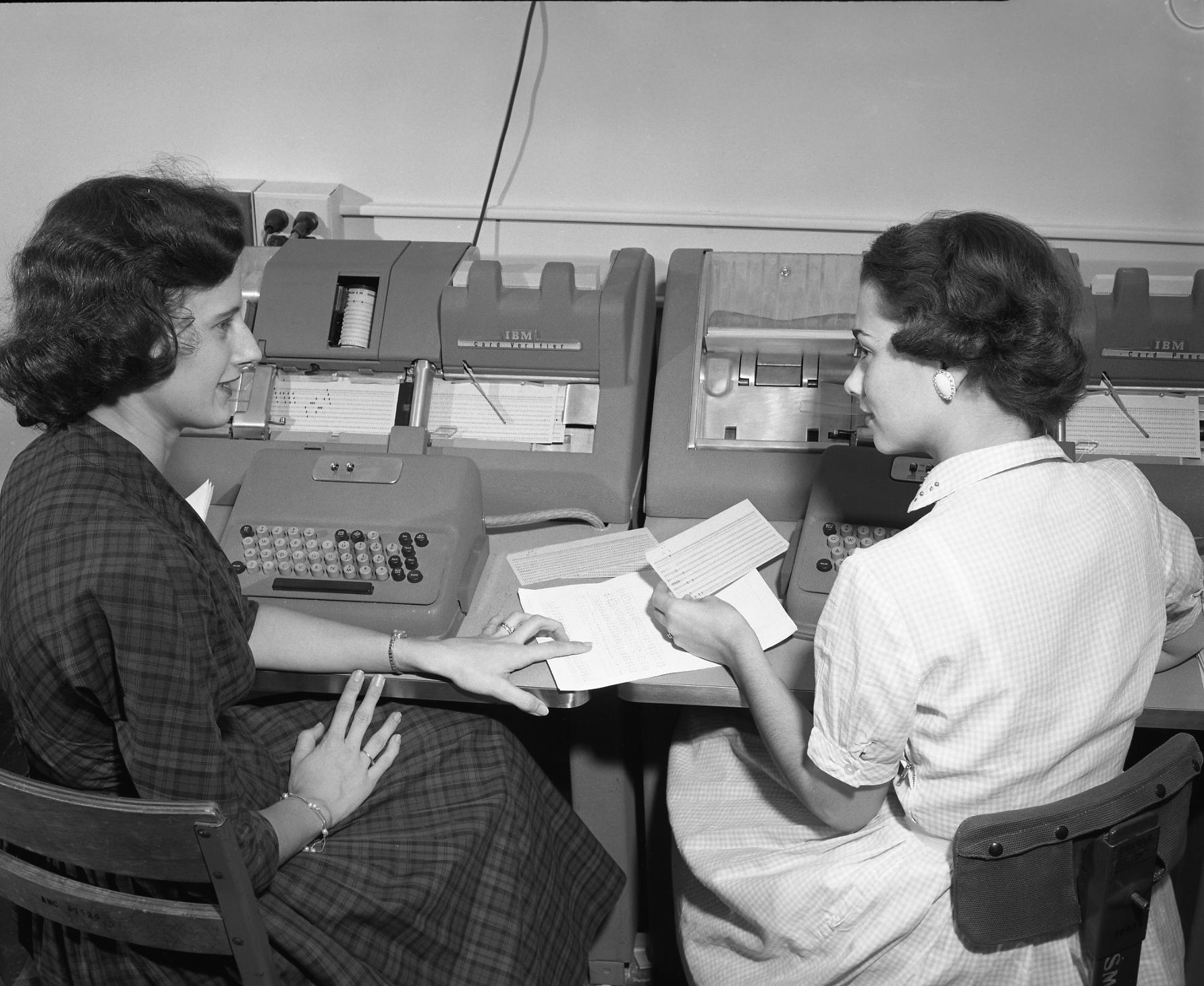Double Data Entry on:
[Wikipedia]
[Google]
[Amazon]
 Two-pass verification, also called double data entry, is a data entry quality control method that was originally employed when data records were entered onto sequential 80-column
Two-pass verification, also called double data entry, is a data entry quality control method that was originally employed when data records were entered onto sequential 80-column
 Two-pass verification, also called double data entry, is a data entry quality control method that was originally employed when data records were entered onto sequential 80-column
Two-pass verification, also called double data entry, is a data entry quality control method that was originally employed when data records were entered onto sequential 80-column Hollerith card
A punched card (also punch card or punched-card) is a piece of stiff paper that holds digital data represented by the presence or absence of holes in predefined positions. Punched cards were once common in data processing applications or to ...
s with a keypunch
A keypunch is a device for precisely punching holes into stiff paper cards at specific locations as determined by keys struck by a human operator. Other devices included here for that same function include the gang punch, the pantograph punch, ...
. In the first pass through a set of records, the data keystrokes were entered onto each card as the data entry operator typed them. On the second pass through the batch, an operator at a separate machine, called a ''verifier'', entered the same data. The verifier compared the second operator's keystrokes with the contents of the original card. If there were no differences, a verification notch was punched on the right edge of the card.
The IBM 056
A keypunch is a device for precisely punching holes into stiff paper cards at specific locations as determined by keys struck by a human operator. Other devices included here for that same function include the gang punch, the pantograph punch, ...
and 059 Card Verifiers were companion machines to the IBM 026 and 029 keypunches, respectively. The later IBM 129 keypunch also could operate as a verifier. In that mode, it read a completed card (record) and loaded the 80 keystrokes into a buffer. A data entry operator reentered the record and the keypunch compared the new keystrokes with those loaded into the buffer. If a discrepancy occurred the operator was given a chance to reenter that keystroke and ultimately overwrite the entry in the buffer. If all keystrokes matched the original card, it was passed through and received a verification punch. If corrections were required, then the operator was prompted to discard the original card and insert a fresh card on which corrected keystrokes were typed. The corrected record (card) was passed through and received a corrected verification punch.
Modern use
While this method of quality control clearly is not proof against systematic errors or operator misread entries from a source document, it is very useful in catching and correcting random miskeyed strokes which occur even with experienced data entry operators. However, it proved to be a fatally tragic flaw in the Therac 25 incident. This method has survived the keypunch and is available in some currently available data entry programs (e.g.PSPP
PSPP is a free software application for analysis of sampled data, intended as a free alternative for IBM SPSS Statistics. It has a graphical user interface and conventional command-line interface. It is written in C and uses GNU Scientific Lib ...
/SPSS
SPSS Statistics is a statistical software suite developed by IBM for data management, advanced analytics, multivariate analysis, business intelligence, and criminal investigation. Long produced by SPSS Inc., it was acquired by IBM in 2009. C ...
Data Entry). One study suggests that, at least in simulated circumstances, a single-pass data entry with range checks and skip rules might not significantly alter the reliability of outcomes compared to studies using two-pass data entry; however, it is desirable to implement both systems in a data entry application.
References
{{DEFAULTSORT:Two Pass Verification Data quality Punched card